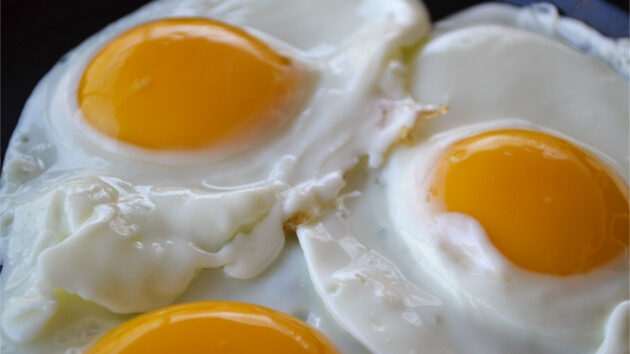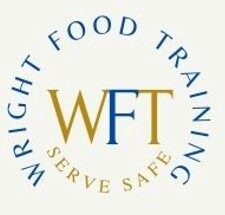Food safety and sunny-side up/over-easy eggs

It's been a debatable issue for quite some time. If you're a restaurant owner or General manager, oversee an assisted living facility or are perhaps an integral part of hospital food service operations.. How in the world do you tell your guest/customer/patient (the Mother who orders an over easy for her 2 year old, the 86 year old who has eaten sunny-side up all his life, or the woman in for her chemo treatment requesting sunny-side up with toast) that you would "rather not". Honestly, how do you do this? Well, educating yourself so that you can pass on your knowledge to others is a great first step! In fact, being able to state that you are a ServSafe CFPM (Certified Food Protection Manager) will go a long way in helping you to accomplish this task and its also a compelling credential to add to any resume. Quite frankly, you may have noticed that many employers in numerous food service industries require it and when they say "ServSafe Certified" in their job postings they do mean ServSafe! While there are numerous very good food safety training courses out there in classrooms and on the internet, ServSafe is the Gold Standard and the "cream of the crop "when it comes to Food Safety training. Recognized worldwide for having the most highly trained professionals in the food service industries. Moving on to eggs, the topic at hand.. Eggs are a very good source of high-quality proteins, vitamins A, B12, D, and E, and they can be scrambled, baked, poached, fried, and many other ways. However, are they always safe to eat? Difference Between Over Easy and Sunny-Side up Eggs The albumen (whites) of over-easy and sunny-side up eggs are cooked until they are set. Unbroken cooking is required for a sunny-side up egg until the whites are just set and the yolk is still raw and transparent. Over-easy eggs are gently "flipped" over so that the top of the egg, which has a bundle of set whites around the still-runny yolk, is ever so lightly seared. Are Over Easy eggs and Sunny-Side up eggs a health risk? "You just need to cook your eggs thoroughly -- no sunny side up, no over easy," said Dr. Jane Henney, FDA Commissioner in 2000. "This is a case when it's better to be safe than sorry." Eating eggs that are just partially cooked poses a risk. Salmonella bacteria are particularly dangerous in duck eggs and chicken. In addition to eggs with a broken or fractured shell, these bacteria can also infect eggs with a clean and smooth intact shell. Each year, it is estimated that Salmonella spp. (non-typhoidal) cause 57,000 fatalities worldwide and 153 million cases of salmonellosis (Hunter & Watkins, 2017). 28 EU member states and the US both reported 8556 and 90,105 cases of salmonellosis in 2019, respectively (Tack et al., 2020). (EFSA & ECDC, 2021). Eggs and egg products rank as the food vehicle with the most outbreak-associated cases, accounting for 9.3% of all cases in 2019 (Pires, Vieira, Hald, & Cole, 2014). This is despite the fact that it can be difficult to attribute the source of human salmonellosis (EFSA & ECDC, 2021). Egg safety advice Any salmonella or other bacteria that might be present in an egg will begin to be eliminated after heating, but proper cooking to the required minimum internal temperature is necessary to finish the job. • Cook the eggs for scrambled eggs, omelets, and frittatas until they are thickened and no liquid egg is discernible. • Cook fried eggs until the yolks are thickened but not hard and the whites are completely set. Cover the skillet with a lid, baste, or turn the eggs to raise their internal temperature. • The water should be brought to a full, rolling boil before adding the soft-cooked eggs. The eggs should stay in the boiling water for about 5 minutes after you turn off the heat and cover the pan. • Poached eggs should be cooked in gently simmering water for 3 to 5 minutes, or until the whites are set and the yolks start to thicken but not firm. • Eggs that have been hardboiled can readily achieve interior temperatures high enough to destroy microorganisms. Even yet, hard-cooked eggs might go bad more rapidly than uncooked ones. After cooking, they must be rapidly chilled and consumed within a week. • Cook egg mixture until it is sufficiently thick to coat a metal spoon with a thin coating and a thermometer registers 160 degrees Fahrenheit or higher for soft custards, such as cream pie and eggnog. After cooking, quickly chill the pan by submerging it in cold water while stirring. After that, chill for at least an hour with the cover on. Vulnerable and at-risk populations It is of course, important to note that raw or under cooked eggs such as sunny-side up and over-easy eggs should not be served to vulnerable and at-risk populations. According to the Food and Drug Administration (FDA), Children of pre-school age, the elderly and those with compromised immune systems are particularly susceptible to foodborne illness. Wright Food Training administers educational food safety training. Services via classroom and on-line instruction for those in the restaurant, hospitality, school, medical/hospital, childcare and numerous additional food service industries. ServSafe Food Manager Certification/Certified Food Protection Manager Certification earned through Wright Food Training is good in all 50 states for 5 years.
